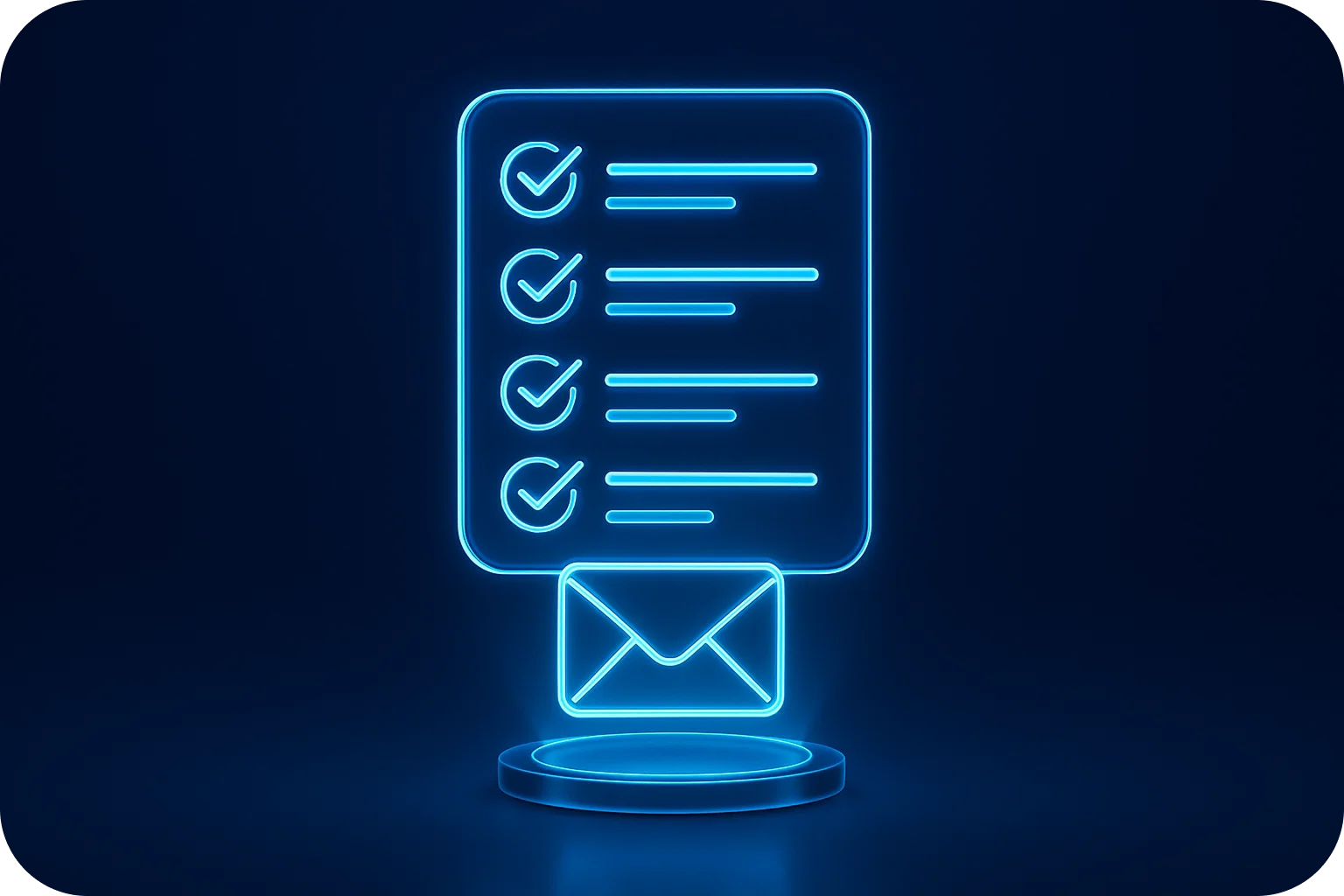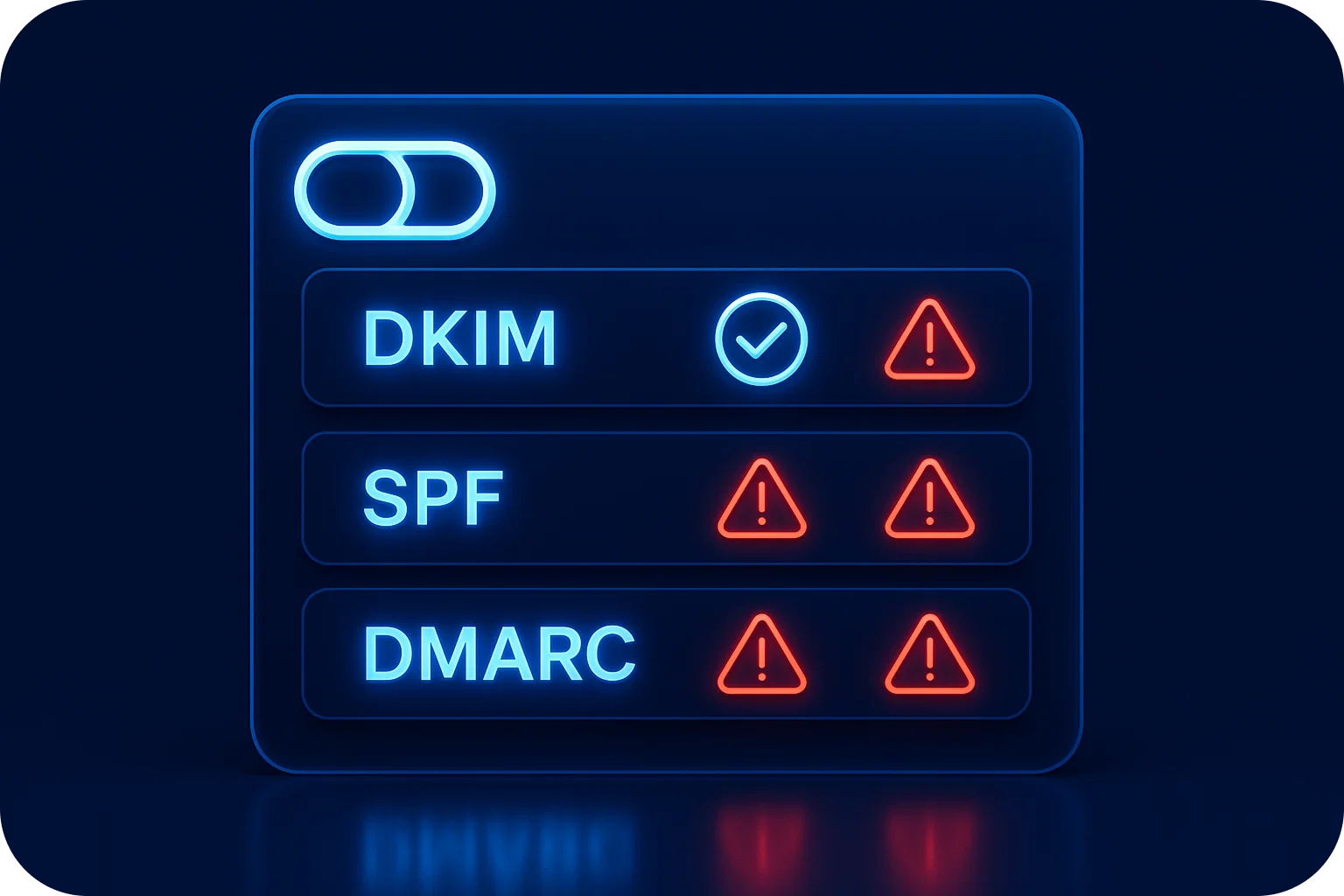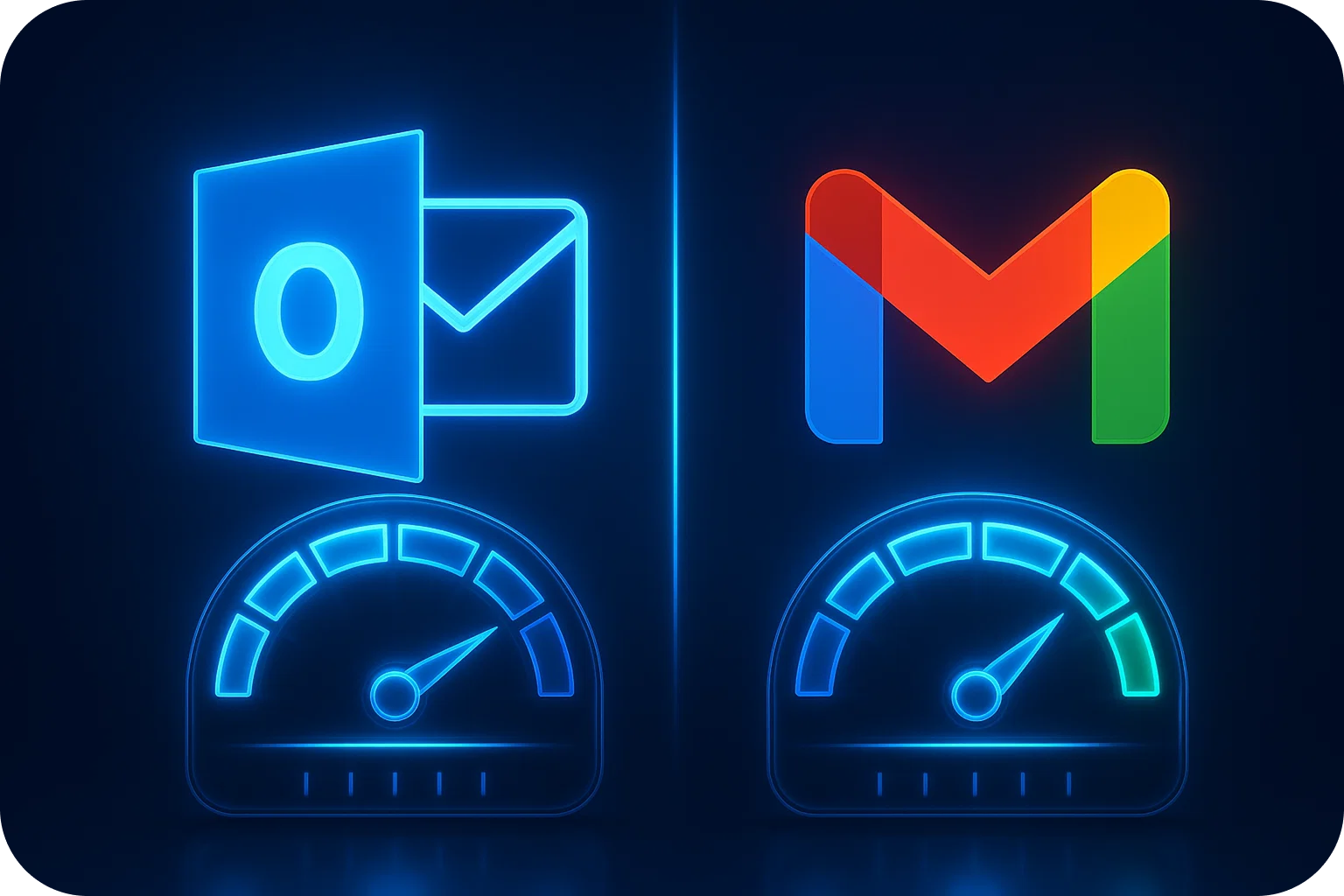Inside Look: How Lead Gen Agencies Hit 96% Inbox Placement Rates

For lead generation agencies, inbox placement isn't just a metric; it's the difference between a thriving business and a struggling one. While most agencies celebrate a 70% inbox placement rate, elite agencies consistently achieve 96% or higher. The question isn't whether this level of performance is possible; it's how they're doing it while scaling to thousands of emails daily.
After working with over 2,000 lead generation agencies and sales teams, we've identified the exact infrastructure decisions and deliverability tactics that separate top performers from the rest. Here's the inside look at what's actually working in 2025.
Why 96% Inbox Placement Matters More Than Ever
Let's start with the math that keeps agency owners up at night. If you're sending 10,000 cold emails monthly at a 70% inbox placement rate, 3,000 of your emails are landing in spam or getting blocked entirely. That's 3,000 potential conversations, meetings, and deals you're leaving on the table.
Now consider the same volume at 96% inbox placement. You're only losing 400 emails to spam folders. That's a difference of 2,600 additional emails reaching decision-makers every single month. For agencies charging per meeting booked or working on performance-based models, this gap represents tens of thousands in monthly revenue.
But here's what most agencies miss: inbox placement isn't just about volume. Email providers like Gmail and Outlook are increasingly sophisticated. A single spam complaint or bounce can trigger domain-wide reputation damage that takes months to recover from. Elite agencies understand that sustainable growth requires infrastructure built for deliverability from day one.
The Infrastructure Foundation: Where Most Agencies Go Wrong
The biggest mistake lead generation agencies make? Treating email infrastructure as an afterthought. They'll invest heavily in copywriting, lead lists, and outreach tools, then try to scale using a handful of Gmail accounts purchased from random providers.
Top-performing agencies take the opposite approach. They build their infrastructure with three non-negotiables:
1. Domain Diversification at Scale
Elite agencies never send more than 60 emails per day from a single domain. This means if you're targeting 1,000 emails daily, you need at least 17 domains in rotation. But it's not just about quantity, it's about proper setup.
Each domain requires:
- Proper SPF, DKIM, and DMARC records are configured correctly
- Gradual warm-up periods of 3-4 weeks before full-scale sending
- Dedicated email accounts (3-5 per domain maximum)
- Monitoring for reputation signals and engagement metrics
The agencies hitting 96% inbox placement rates aren't manually managing this complexity. They're using infrastructure platforms that automate DNS configuration, handle bulk domain purchases, and manage warm-up schedules across hundreds of inboxes simultaneously.
2. Email Provider Selection Strategy
Not all email providers are created equal when it comes to cold outreach. The agencies we've studied use a strategic mix:
Google Workspace accounts for high-priority campaigns targeting enterprise prospects. Gmail's sender reputation carries weight, especially when reaching Gmail recipients (which represent 40%+ of B2B inboxes).
Microsoft 365 Outlook accounts for campaigns targeting corporate environments where Outlook dominates. Sending from Outlook to Outlook recipients improves deliverability through provider affinity.
Shared IP mailboxes for high-volume, cost-effective campaigns where the target audience is less sensitive to sender domain recognition.
The key insight? Top agencies don't pick one provider and hope for the best. They match provider selection to campaign goals, target audience, and budget constraints. This strategic approach alone can improve inbox placement by 15-20 percentage points.
3. Dedicated IP Infrastructure for Scale
Once an agency consistently sends 50,000+ emails monthly, a dedicated IP infrastructure becomes essential. Shared IPs mean your sender reputation is influenced by every other sender using that IP, a risk that grows as you scale.
Dedicated IPs give you complete control over sender reputation, but they require proper management. Elite agencies warm up dedicated IPs gradually over 6-8 weeks, starting with their most engaged segments before expanding to colder audiences. They also monitor IP reputation daily using tools like Google Postmaster and Microsoft SNDS.
The Warm-Up Protocol That Actually Works
Ask any agency hitting 96% inbox placement about their warm-up process, and you'll hear the same thing: patience pays off. The agencies struggling with deliverability are the ones trying to go from zero to 100 emails per day in week one.
Here's the warm-up protocol used by top performers:
Week 1-2: Send 5-10 emails per inbox per day to highly engaged contacts (existing customers, warm leads, internal team members). Focus on generating replies and positive engagement signals.
Week 3-4: Gradually increase to 20-30 emails per inbox per day. Introduce cold prospects, but maintain a 50/50 mix with warm contacts to keep engagement rates high.
Week 5-6: Scale to 40-50 emails per inbox per day, now primarily cold prospects. Monitor bounce rates, spam complaints, and engagement metrics closely.
Week 7+: Reach full sending capacity of 60-80 emails per inbox per day (though most elite agencies cap at 60 for safety margin).
The agencies that skip or rush this process see immediate consequences: spam folder placement, domain blacklisting, and months of reputation repair work. The ones that follow it religiously achieve 96%+ inbox placement that remains stable even as they scale.
Content and Sending Tactics That Protect Deliverability
Infrastructure is foundational, but even a perfect technical setup won't save poorly executed campaigns. Elite lead generation agencies follow strict content and sending guidelines:
Email Copy Best Practices
- Avoid spam trigger words: "Free," "guarantee," "limited time," and excessive punctuation are red flags for spam filters
- Personalize beyond first name: Reference specific company details, recent news, or relevant pain points
- Keep it conversational: Write like you're emailing a colleague, not delivering a sales pitch
- Use plain text formatting: Fancy HTML templates trigger spam filters; plain text emails look more authentic
- Include a clear, simple CTA: One ask per email, making it easy for recipients to respond
Sending Pattern Optimization
Email providers analyze sending patterns to identify bulk senders. Elite agencies randomize:
- Send times: Distribute emails throughout business hours rather than blasting all at once
- Email intervals: Vary the time between sends from each inbox (avoid sending every 60 seconds like clockwork)
- Daily volumes: Don't send exactly 50 emails every single day; vary between 45-55 to appear more human
List Hygiene and Targeting
Nothing destroys inbox placement faster than high bounce rates. Agencies hitting 96% placement rates obsess over list quality:
- Verify all email addresses before sending (target <2% bounce rate)
- Remove hard bounces immediately and suppress them from future campaigns
- Monitor engagement and suppress consistently unresponsive contacts after 3-4 touches
- Segment lists by engagement level and adjust sending frequency accordingly
Monitoring and Optimization: The Continuous Improvement Loop
The agencies maintaining 96% inbox placement don't set up their infrastructure and forget about it. They monitor key metrics weekly and adjust tactics based on data:
Primary metrics tracked:
- Inbox placement rate (via seed testing across major providers)
- Bounce rate (hard and soft bounces)
- Spam complaint rate
- Reply rate and engagement signals
- Domain and IP reputation scores
When inbox placement drops below 90%:
- Immediately reduce sending volume by 50%
- Review recent campaign content for spam triggers
- Check DNS records and technical configuration
- Analyze bounce and complaint rates for problem segments
- Gradually scale back up once metrics stabilize
This proactive monitoring approach prevents small issues from becoming major reputation crises. It's the difference between agencies that maintain consistent performance and those that experience boom-and-bust cycles.
The ROI of Elite Inbox Placement
Let's bring this back to business impact. For a lead generation agency sending 20,000 emails monthly:
At 70% inbox placement:
- 14,000 emails reach inboxes
- At 2% reply rate: 280 replies
- At 20% meeting conversion: 56 meetings booked
- At $200 per meeting: $11,200 monthly revenue
At 96% inbox placement:
- 19,200 emails reach inboxes
- At 2% reply rate: 384 replies
- At 20% meeting conversion: 77 meetings booked
- At $200 per meeting: $15,400 monthly revenue
That's an additional $4,200 in monthly revenue, $50,400 annually, from the same email volume and targeting. Scale this across larger campaigns, and the revenue impact becomes transformational.
Building Your Path to 96% Inbox Placement
Achieving elite inbox placement rates isn't about secret hacks or shortcuts. It's about building proper infrastructure, following proven warm-up protocols, creating compliant content, and continuously monitoring performance.
The agencies hitting 96% inbox placement rates share these characteristics:
- They invest in proper email infrastructure from day one
- They diversify domains and email providers strategically
- They follow disciplined warm-up protocols without cutting corners
- They obsess over list quality and email content best practices
- They monitor metrics closely and adjust tactics based on data
For lead generation agencies serious about scaling sustainably, deliverability isn't a technical problem to solve once. it's an operational discipline that requires the right infrastructure, processes, and ongoing attention.
The difference between 70% and 96% inbox placement isn't luck. It's infrastructure. And for agencies ready to compete at the highest level, that infrastructure is available today.
Ready to achieve 96% inbox placement for your agency? Mailpool provides enterprise-grade cold email infrastructure with automated deliverability setup, unlimited domains and inboxes, and 10-minute implementation. Join over 2,000 agencies and sales teams scaling their outreach without sacrificing deliverability. Book a demo to see how we help agencies hit 96%+ inbox placement consistently.
More articles
Get started now




%201.png)





